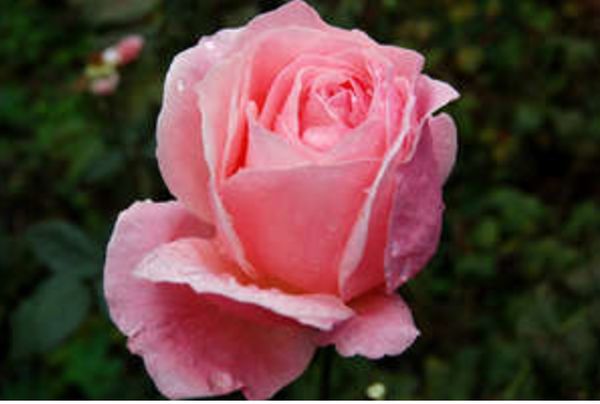Using Photomatix to create HDR, use JPEG or RAW?
Jul 4, 2019 10:18:57 #
Picture Taker
Loc: Michigan Thumb
I have used Photomatix for years (and tried others). In shoot JPG and RAW 99% of the time I use my JPG for the HDR. I shoot on a days shoot 100 or more. In most cases I need the pictures the next day. My process now is check my shots in JPG for being 3 shot of every picture (takes out any messed up 3 shots) put them in Photomatix automatic, put "ghost removal" to 100% as I hand hold the 3 shots, and let it go. I will either eat, go to sleep or do something else. I have just recently stopped shooting the RAW.
This is me and if some of you think it wrong that's OK. I take em my way, process them by way and sell them. I'm content and the customer is content.
This is me and if some of you think it wrong that's OK. I take em my way, process them by way and sell them. I'm content and the customer is content.
Jul 4, 2019 10:49:34 #
Since RAW data is not an image what does Photomax actually use? Is the RAW file converted to a JPG, or TIFf image before manipulation? If so would it not be advantageous to first PP the 3 RAW data files to your desired result before applying HDR?
aweisbach wrote:
In an earlier post about doing HDR, a couple peopl... (show quote)
Jul 4, 2019 10:59:19 #
wham121736 wrote:
Since RAW data is not an image what does Photomax actually use? Is the RAW file converted to a JPG, or TIFf image before manipulation? If so would it not be advantageous to first PP the 3 RAW data files to your desired result before applying HDR?
Good question. When I asked Photomatix if there was an advantage to using RAW files, they told me the files have to be converted first. So I tried converting my RAW files into TIFF files before sending them to Photomatix. I saw absolutely no difference than when I sent the RAW files directly to Photomatix. Since I'm using Photomatix as a LR plugin, I think LR is doing the RAW conversion.
Jul 4, 2019 11:10:05 #
fetzler
Loc: North West PA
magpix wrote:
There may be some confusion with how Photomatix wo... (show quote)
I always use Tiff (16 bit) for any operations like HDR and fucus stacking. Only the final version becomes a Jpg
Jul 4, 2019 12:48:00 #
If you converted your RAW files to TIFF images without making any corrections or changes then sent them to Photomax and got the same results as you did when you sent the RAW files to Photomax directly that suggests that Photomax converted them first to un modified TIFF images then did HDR. Perhaps a better test would be to compare RAW to Photomax with RAW files converted to TIFF images that are optimized in PS regarding sharpness, WB, etc. and then sent to Photomax for HDR conversion. I have done some experimenting with this and concluded that the best HDR output from Photomax comes from inputting the best corrected TIFF images. Garbage in, garbage out! Please Keep us posted on what your experimenting teaches you.
magpix wrote:
Good question. When I asked Photomatix if there was an advantage to using RAW files, they told me the files have to be converted first. So I tried converting my RAW files into TIFF files before sending them to Photomatix. I saw absolutely no difference than when I sent the RAW files directly to Photomatix. Since I'm using Photomatix as a LR plugin, I think LR is doing the RAW conversion.
Jul 4, 2019 14:19:06 #
Results without Raw files can lead to artifacts pronounced Halos , loss of recovery of blown highlights even the use of 12 bit raw files instead of 14 bit files can limit your results in recovery of highlights that are approaching clipping . If you are not printing large images 4 feet and larger it may not matter to you . If you are using Photomatix try photo dynamics by Mediachance a much more intuitive engine with way more options and TMOs , tone map operators . You can also save multiple versions of results without starting over by dragging a finished file and continue on to modify more versions...
Jul 4, 2019 14:32:20 #
nikonbrain wrote:
Results without Raw files can lead to artifacts pr... (show quote)
I think Mediachance's product's name is Dynamic Photo HDR - https://www.mediachance.com/hdri/. I also don't believe it works as a plugin to LR or Photoshop.
Jul 4, 2019 15:59:25 #
DWU2 wrote:
I think Mediachance's product's name is Dynamic Photo HDR - https://www.mediachance.com/hdri/. I also don't believe it works as a plugin to LR or Photoshop.
Yes its not a plugin it is a standalone program...P.S. For everyone if you look at that link at end you see HDRI , that is the correct way to to abbreviate the process . High dynamics range IMAGING.....thanks for posting link
Jul 17, 2019 16:57:03 #
What do you mean by "Results w/o Raw files can lead to artifacts...highlights". Are you talking about
RAW files sent to Photomax before comverting to tiff or jpgs?
RAW files sent to Photomax before comverting to tiff or jpgs?
nikonbrain wrote:
Results without Raw files can lead to artifacts pr... (show quote)
Jul 17, 2019 18:14:33 #
Picture Taker
Loc: Michigan Thumb
In the case of HDR if you use RAW it will be working each RAW picture to be fixed and converted to JPG and then run the HDR. I find my JPG is fine for my Photomatix. We all know how we like to work, so do your own thing and enjoy photography.
Jul 17, 2019 18:23:23 #
magpix wrote:
Good question. When I asked Photomatix if there was an advantage to using RAW files, they told me the files have to be converted first. So I tried converting my RAW files into TIFF files before sending them to Photomatix. I saw absolutely no difference than when I sent the RAW files directly to Photomatix. Since I'm using Photomatix as a LR plugin, I think LR is doing the RAW conversion.
Yes, Lightroom is doing the RAW conversion.
You will only see differences if you desire to push the result such as adjust white balance. The RAW converted to TIFF would have contained that information, plus others. The JPEG only contain what the conversion needed.
Jul 17, 2019 18:34:19 #
Picture Taker
Loc: Michigan Thumb
JPG gives you a decent picture, RAW need to be fixed. Fix 3 pictures in RAW for each HDR before you start or touch up one JPG HDR.
That's how I have been looking at it. I have been doing HDR about 90% of the time for about 5 years and just last month gave up shooting in JPG and RAW. I gave up RAW.
That's how I have been looking at it. I have been doing HDR about 90% of the time for about 5 years and just last month gave up shooting in JPG and RAW. I gave up RAW.
Jul 17, 2019 19:26:28 #
wham121736 wrote:
What do you mean by "Results w/o Raw files can lead to artifacts...highlights". Are you talking about
RAW files sent to Photomax before comverting to tiff or jpgs?
RAW files sent to Photomax before comverting to tiff or jpgs?
I searched around the internet to find a good example of JPEG artifacts. This one is a blow up and is kind of extreme. Look around the edges of the rose and see the squiggly markings above and below the edges. These are caused by JPEG compression, and the more the compression, the more of these that may appear.
It is quite possible to see these on JPEGs produced by the camera when you zoom in. Some brands of cameras are worse than others. The RAWs do not exhibit these artifacts. And I find that exporting to JPEG from RAW in Lightroom tends to not show artifacts, but it might if you compress a lot. I haven't tried that.
Update: I exported a JPEG and compressed it to 11% and found it loaded with artifacts. The image of the lake is that file.
Jul 17, 2019 20:07:39 #
Yes why would you convert to tiff , from a 14 bit raw file and loose your advantage to save highliglight data close to clipping . It makes no sense...
Jul 17, 2019 20:25:54 #
wham121736 wrote:
What do you mean by "Results w/o Raw files can lead to artifacts...highlights". Are you talking about
RAW files sent to Photomax before comverting to tiff or jpgs?
RAW files sent to Photomax before comverting to tiff or jpgs?
Yes why would you want to convert a 14 bit raw file to a tiff or jpeg before importing to photomatix ? 14bit files contain more data to be used in the merge ...I always use 14bit raw to retain all info for better highlight recovery ....there are test out there showing the difference when using raw vrs jpeg the final images using jpeg are more neutral and have less contrast ... and presence.. .
If you want to reply, then register here. Registration is free and your account is created instantly, so you can post right away.






